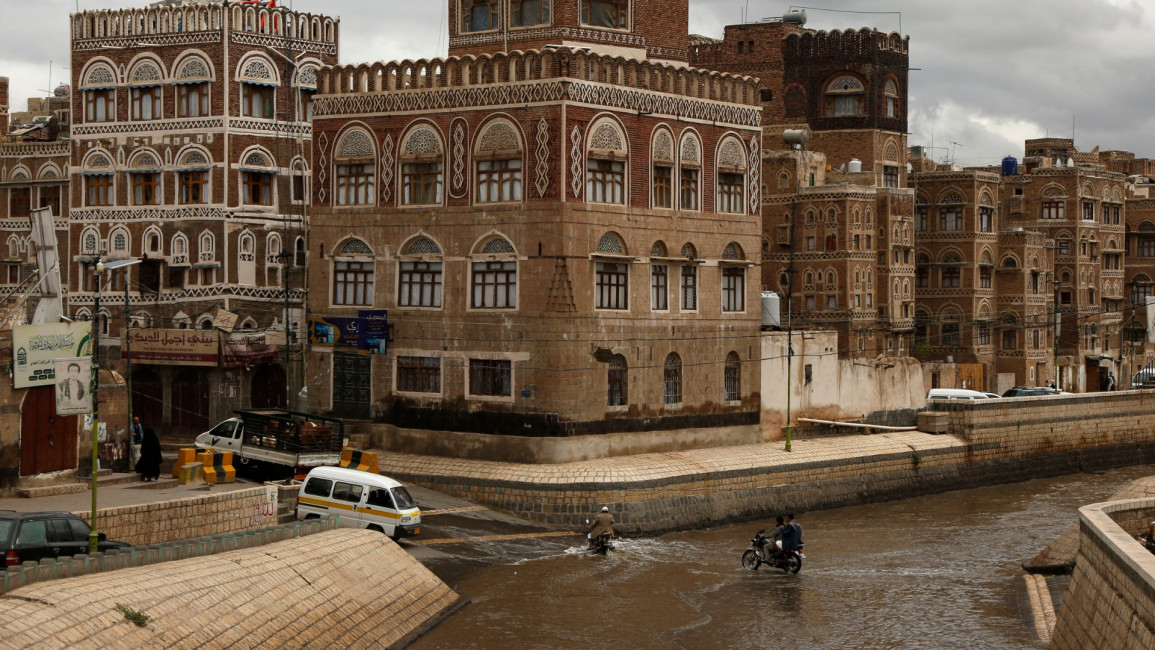Hundreds killed as disastrous floods destroy historic homes in Yemen's Old Sanaa city
Floods in Sanaa, Hajjah and Hodeida have left at least 131 people dead and thousands more homeless, Houthi health officials reported.
Days of torrential rain has also destroyed more than 260 homes, including historic architectural sites in Yemen's Old Sanaa city.
Some 160,000 people have also been displaced across Hajjah and Hodeida while in Marib, thousands of IDP's lost their makeshift homes after a number of refugee camps flooded.
The Yemeni government has already called on the UN to help those affected by the floods in several provinces across the country.
Yemen's Houthi rebels also made an appeal for help to save the capital from the floods that have toppled buildings.
"We are sending a call of distress to the entire world and international organisations – particularly the UNESCO and world heritage centers – to save the ancient city of Sanaa," the rebel General Organization for the Preservation of Historic Cities said in a statement.
"Some of the city's buildings collapsed due to the continuing rains that ravaged several Yemeni regions," the statement said.
Twitter Post
|
Earlier this month, Yemen's historic Marib dam flooded for the first time since it was rebuilt 34 years ago, severely destroying nearby makeshift homes of internally displaced people in the area.
The 8th century BC structure, regularly dubbed one of the world's ancient engineering wonders, was struck with torrential rain this week, with reports suggesting dangerous rise in water levels.
"The Mariib Dam started to flood for the first time since it was rebuilt in 1986 after the water level exceeded the barrier of 550 million cubic meters," Ahmed Al-Areifi, the director of the Marib Dam Project told Anadolu.
The structure, which has collapsed several times since it was first erected in the 8th century, can accommodate around 400 million cubic metres of water.
Experts have shown growing concern over potential damage due to the flooding, which has already destroyed nearby villages and refugee camps, damaging the homes of more than 450 displaced families.
The central province of Marib is a refuge for some 750,000 Yemenis who have fled Houthi rebel offensives since the start of the war. Days of abnormally intense rains have hit 5,500 families, submerging their tents in water and mud and washing away their food aid, Yemen's official SABA news agency reported last week.
Read more: Flooding from heavy seasonal rains leaves 16 dead in Yemen
Yemen's infrastructure has been devastated by a conflict that escalated in March 2015 after Houthi rebels seized the capital Sanaa.
More than 100,000 people, mostly civilians, have been killed and millions displaced since Yemen's conflict exacerbated with the Saudi-led coalition intervention in 2015, in what the United Nations has called the world's worst humanitarian disaster.
According to the UN, the conflict has also left some 3.65 million internally displaced.
The devastating floods in the Arab world's poorest country have exacerbated a cholera outbreak, with 127,900 suspected cases across eight provinces since January, the World Health Organization said earlier this month.
The ICRC warned the floods have also accelerated the spread of dengue fever and malaria, as mosquitoes carrying the diseases breed in puddles. Yemen has also hit with Covid-19, which has infected thousands across the country.
Follow us on Facebook, Twitter and Instagram to stay connected



